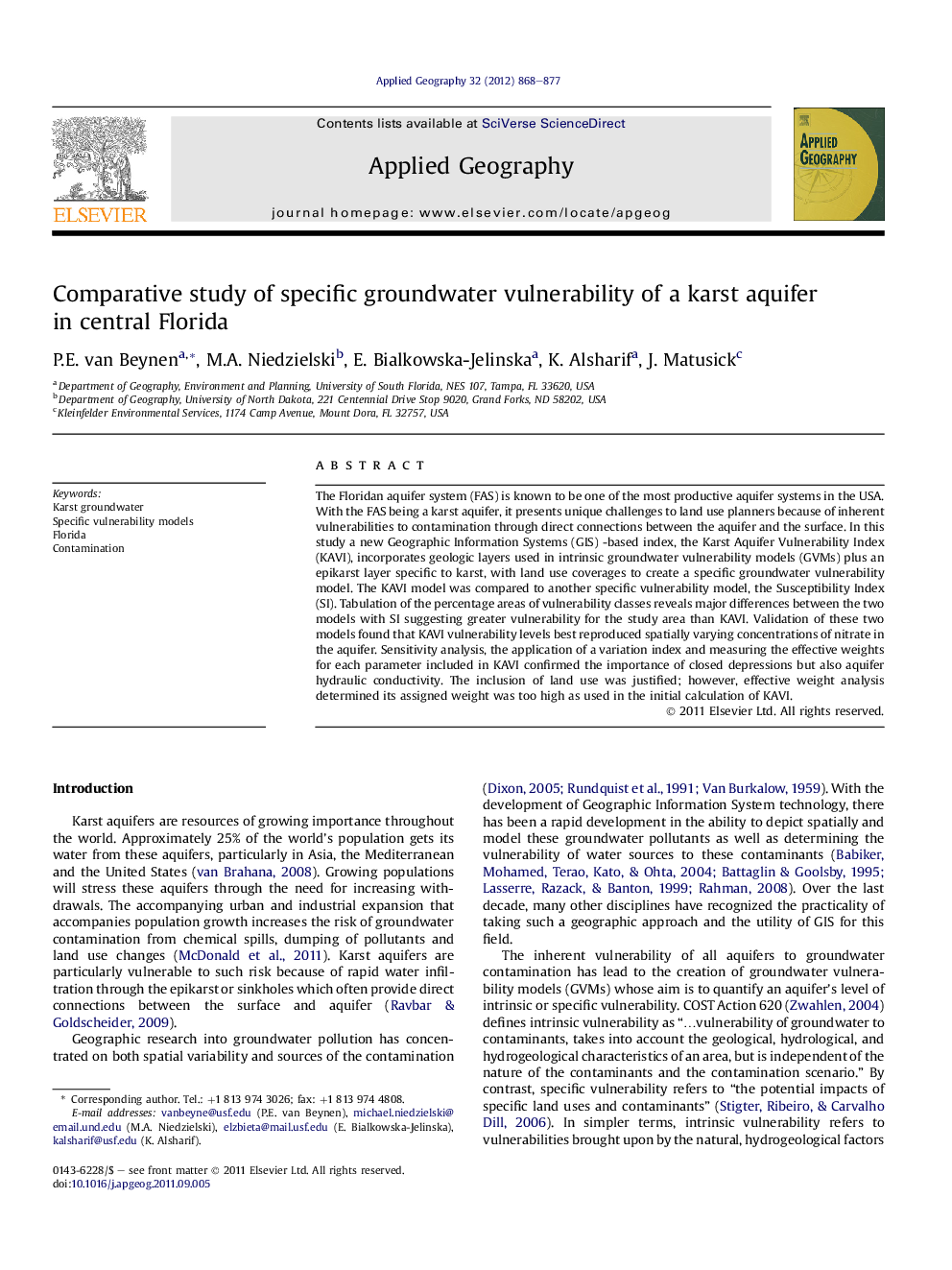| Article ID | Journal | Published Year | Pages | File Type |
|---|---|---|---|---|
| 83608 | Applied Geography | 2012 | 10 Pages |
The Floridan aquifer system (FAS) is known to be one of the most productive aquifer systems in the USA. With the FAS being a karst aquifer, it presents unique challenges to land use planners because of inherent vulnerabilities to contamination through direct connections between the aquifer and the surface. In this study a new Geographic Information Systems (GIS) -based index, the Karst Aquifer Vulnerability Index (KAVI), incorporates geologic layers used in intrinsic groundwater vulnerability models (GVMs) plus an epikarst layer specific to karst, with land use coverages to create a specific groundwater vulnerability model. The KAVI model was compared to another specific vulnerability model, the Susceptibility Index (SI). Tabulation of the percentage areas of vulnerability classes reveals major differences between the two models with SI suggesting greater vulnerability for the study area than KAVI. Validation of these two models found that KAVI vulnerability levels best reproduced spatially varying concentrations of nitrate in the aquifer. Sensitivity analysis, the application of a variation index and measuring the effective weights for each parameter included in KAVI confirmed the importance of closed depressions but also aquifer hydraulic conductivity. The inclusion of land use was justified; however, effective weight analysis determined its assigned weight was too high as used in the initial calculation of KAVI.
► KAVI is the first index of its type to include anthropogenic sources for vulnerability. ► KAVI’s vulnerability designations correlated with observed water quality indicators. ► KAVI outperforms the SI vulnerability index in its prediction of aquifer contamination. ► Sensitivity and weighting analyses confirmed KAVI’s weights for each parameter used.
